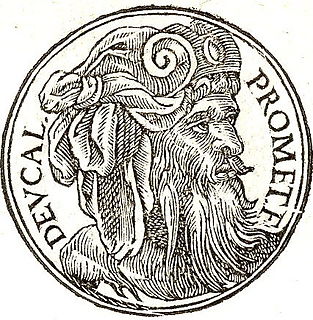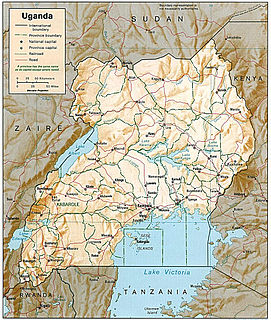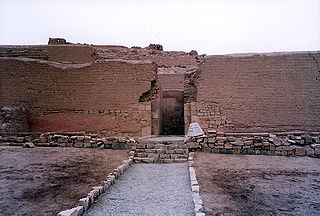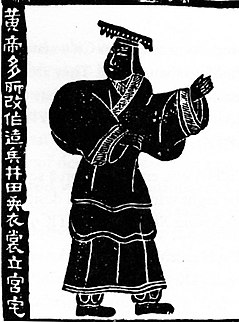 W
WAbraham is the common patriarch of the Abrahamic religions, including Judaism, Christianity, and Islam. In Judaism, he was the founding father of the covenant of the pieces, the special relationship between the Hebrews and God; in Christianity, he was the spiritual progenitor of all believers, Jewish or Gentile (non-Jewish); and in Islam he is seen as a link in the chain of prophets that begins with Adam and culminates in Muhammad.
 W
WAdam and Eve according to the creation myth of the Abrahamic religions, were the first man and woman. They are central to the belief that humanity is in essence a single family, with everyone descended from a single pair of original ancestors. They also provide the basis for the doctrines of the fall of man and original sin that are important beliefs in Christianity, although not held in Judaism or Islam.
 W
WIn Greco-Roman mythology, Aeneas was a Trojan hero, the son of the Trojan prince Anchises and the Greek goddess Aphrodite. His father was a first cousin of King Priam of Troy, making Aeneas a second cousin to Priam's children. He is a character in Greek mythology and is mentioned in Homer's Iliad. Aeneas receives full treatment in Roman mythology, most extensively in Virgil's Aeneid, where he is cast as an ancestor of Romulus and Remus. He became the first true hero of Rome. Snorri Sturluson identifies him with the Norse god Vidarr of the Æsir.
 W
WThe Ajilesoro Royal Dynasty in llara Ile-lfe emerged from Obalufon Ogbogbodirin who succeeded his forebears Osangangan Obamakin (Oranfe) and Ogun; who reigned as the second and third Ooni of Ife over 4,000 years ago after the reign of Oduduwa.
 W
WAlan Gua is a mythical figure from The Secret History of the Mongols, eleven generations after the grey wolf and the white doe, and ten generations before Genghis Khan.
 W
WIn Norse mythology, Ask and Embla —male and female respectively—were the first two humans, created by the gods. The pair are attested in both the Poetic Edda, compiled in the 13th century from earlier traditional sources, and the Prose Edda, written in the 13th century by Snorri Sturluson. In both sources, three gods, one of whom is Odin, find Ask and Embla and bestow upon them various corporeal and spiritual gifts. A number of theories have been proposed to explain the two figures, and there are occasional references to them in popular culture.
 W
WIn Cook Islands mythology, Avatea was a lunar deity and the father of gods and men in Mangaian myth of origin. His eyes were thought to be the Sun and the Moon; he was also known as the god of light.
 W
WCaucas or Kavkasos was the supposed ancestor of Chechens and Ingush according to the Georgian chronicles. His story is narrated in the compilation of the medieval Georgian chronicles, Kartlis Tskhovreba, taken down from oral tradition by Leonti Mroveli in the 11th century. The legend has it that he was a son of Targamos and, thus, brother of Haos, Movakos, Lekos, Heros, Kartlos, and Egros took their origin.
 W
WDangun or Dangun Wanggeom was the legendary founder and god-king of Gojoseon, the first Korean kingdom, around present-day Liaoning, Manchuria, and the northern part of the Korean Peninsula. He is said to be the "grandson of heaven" and "son of a bear", and to have founded the kingdom in 2333 BC. The earliest recorded version of the Dangun legend appears in the 13th-century Samguk Yusa, which cites China's Book of Wei and Korea's lost historical record Gogi . However, it has been confirmed that there is no relevant record in the China's Book of Wei.There are around seventeen religious groups that focus on the worship of Dangun.
 W
WIn Greek mythology, Deucalion was the son of Prometheus; ancient sources name his mother as Clymene, Hesione, or Pronoia. He is closely connected with the flood myth in Greek mythology.
 W
WDzunuḵ̓wa, also Tsonoqua, Tsonokwa, Basket Ogress, is a figure in Kwakwaka'wakw mythology and Nuu-chah-nulth mythology.
 W
WHayk, also known as Hayk Nahapet, is the legendary patriarch and founder of the Armenian nation. His story is told in the History of Armenia attributed to the Armenian historian Moses of Chorene.
 W
WIshmael was the first son of Abraham, the common patriarch of the Abrahamic religions, and the Egyptian Hagar, and is venerated by Muslims as a prophet. According to the Genesis account, he died at the age of 137.
 W
WEmperor Jimmu was the legendary first emperor of Japan according to the Nihon Shoki and Kojiki. His accession is traditionally dated as 660 BC. In Japanese mythology, he was a descendant of the sun goddess Amaterasu, through her grandson Ninigi, as well as a descendant of the storm god Susanoo. He launched a military expedition from Hyuga near the Seto Inland Sea, captured Yamato, and established this as his center of power. In modern Japan, Jimmu's legendary accession is marked as National Foundation Day on February 11. In the 1930s and 1940s it was dangerous to question the existence of Jimmu.
 W
WKartlos is the eponymous ancestor of the Georgians (Kartvelians) in Georgian mythology, more specifically of the nation of Kartli . Kartlos is introduced in the medieval Georgian Chronicles , presumably recorded from oral tradition by Leonti Mroveli in the 11th century.
 W
WKeyumars or Kiomars was the name of the first king (shah) of the Pishdadian dynasty of Iran according to the Shahnameh.
 W
WLech, Czech and Rus refers to a founding legend of three Slavic brothers: the Poles, the Czechs, and the Rus'. The three legendary brothers appear together in the Wielkopolska Chronicle, compiled in the early 14th century. The legend states that the brothers, on a hunting trip, followed different prey and thus travelled in different directions: Lech in the northwest, Czech in the west, and Rus' in the northeast. There are multiple versions of the legend, including several regional variants throughout West Slavic, and to lesser extent, other Slavic countries that mention only one or two brothers. The three also figure into the origin myth of South Slavic peoples in some legends. Their stories are often, to some extent as well, used as a myth to understand the eventual foundation of the Polish, Czech and the East Slavic states, in accordance with the legend.
 W
WIn Norse mythology, Líf and Lífþrasir, sometimes anglicized as Lif and Lifthrasir, female and male respectively, are two humans who are foretold to survive the events of Ragnarök by hiding in a wood called Hoddmímis holt and, after the flames have abated, to repopulate the newly risen and fertile world. Líf and Lífþrasir are mentioned in the Poetic Edda, which was compiled in the 13th century from earlier traditional sources, and the Prose Edda, written in the 13th century by Snorri Sturluson. Many scholars have speculated as to the underlying meaning and origins of the two names.
 W
WManu is a term found with various meanings in Hinduism. In early texts, it refers to the archetypal man, or to the first man. The Sanskrit term for 'human', मानव means 'of Manu' or 'children of Manu'. In later texts, Manu is the title or name of fourteen Kshatriya rulers of earth, or alternatively as the head of dynasties that begin with each cyclic kalpa (aeon) when the universe is born anew. The title of the text Manusmriti uses this term as a prefix, but refers to the first Manu – Svayambhuva, the spiritual son of Brahma.
According to the Zoroastrian cosmogony, Mashya and Mashyana were the first man and woman whose procreation gave rise to the human race.
 W
WAccording to the Hawaiian chants, Chief Maweke was a chief of the highest known rank who lived in the 11th century. He is described in the legends as a wizard and an Aliʻi of "the blue blood". He was an ancestor of the royalty of the island of Oahu.
 W
WNambi is the daughter of Mugulu, also known as Ggulu in some versions of Ugandan mythology. In the Ugandan creation myth, it is Nambi and her younger sister who discover Kintu, the first man. Nambi helps Kintu throughout his journey and trials, and eventually becomes his wife and mother of his children.
 W
WIn the traditions of Abrahamic religions, Noah features as the tenth and last of the pre-Flood patriarchs. His story appears in the Hebrew Bible and in the Quran. The Genesis flood narrative is among the best-known stories of the Bible. Noah is also portrayed as a "tiller of the soil" and as a drinker of wine.
 W
WNyame is the God of the Akan people of Ghana. His name means "he who knows and sees everything" and "omniscient, omnipotent sky god" in the Akan language.
Nyatri Tsenpo was a king of Tibet. He was a legendary progenitor of the Yarlung dynasty. His reign is said to have begun in 127 BC and in traditional Tibetan history, he was the first ruler of the kingdom. The Dunhuang chronicles report that he is said to have descended from heaven onto the sacred mountain Yarlha Shampo. Due to certain physical peculiarities – his hands were webbed, and his eyelids closed from the bottom and not the top – he was hailed as a god by locals, and they took him as their king.
 W
WOduduwa was a Yoruba divine king. According to tradition he was the holder of the title of the Ooni of Ile-Ife, the Yoruba holy city. He was not only the first ruler of a unified Ife, but also the progenitor of various independent royal dynasties in Yorubaland and ancestor of their numerous crowned kings. His name, phonetically written by Yoruba language-speakers as Odùduwà and sometimes contracted as Ooduwa, Odudua or Oòdua is today venerated as "the hero, the warrior, the leader and father of the Yoruba race". Through a war lasting many years, Oduduwa was able to defeat opposing forces of the 13 indigenous communities of Ife to become King of Ife and formed these communities into a single Ife unit.
 W
WPacha Kamaq was the deity worshipped in the city of Pachacamac by the Ichma.
 W
WPaikea is a notable ancestor who originated in Hawaiki according to Māori tradition. He is particularly known to tribes with origins in the Gisborne District such as Ngāti Porou, and Ngāi Tahu. Paikea is the name assumed by Kahutia-te-rangi because he was assisted by a whale to survive an attempt on his life by his half-brother Ruatapu.
 W
WThe patriarchs of the Bible, when narrowly defined, are Abraham, his son Isaac, and Isaac's son Jacob, also named Israel, the ancestor of the Israelites. These three figures are referred to collectively as the patriarchs, and the period in which they lived is known as the patriarchal age.
 W
WIn Greek mythology, Pyrrha was the daughter of Epimetheus and Pandora and wife of Deucalion of whom she had three sons, Hellen, Amphictyon, Orestheus; and three daughters Protogeneia, Pandora II and Thyia. According to some accounts, Hellen or Helmetheus was credited to be born from Pyrrha's union with Zeus.
 W
WQais Abdur Rashīd or Qais Abdul Rasheed is said to be, in post-Islamic lore, the legendary founding father of the Pashtuns. It is believed that the conception of such a figure was promoted to bring harmony between religious and ethnic identities post-Arabic influence over the region. Qais is said to have traveled to Mecca and Medina in Arabia during the early days of Islam and converted. But contrary to this legend, Islam spread through Afghanistan over a period of time.
 W
WQʼuqʼumatz was a deity of the Postclassic Kʼicheʼ Maya. Qʼuqʼumatz was the Feathered Serpent divinity of the Popol Vuh who created humanity together with the god Tepeu. Qʼuqʼumatz is considered to be the rough equivalent of the Aztec god Quetzalcoatl, and also of Kukulkan of the Yucatec Maya tradition. It is likely that the feathered serpent deity was borrowed from one of these two peoples and blended with other deities to provide the god Qʼuqʼumatz that the Kʼicheʼ worshipped. Qʼuqʼumatz may have had his origin in the Valley of Mexico; some scholars have equated the deity with the Aztec deity Ehecatl-Quetzalcoatl, who was also a creator god. Qʼuqʼumatz may originally have been the same god as Tohil, the Kʼicheʼ sun god who also had attributes of the feathered serpent, but they later diverged and each deity came to have a separate priesthood.
 W
WIn Māori mythology the primal couple Rangi and Papa appear in a creation myth explaining the origin of the world. In some South Island dialects, Rangi is called Raki or Rakinui.
 W
WRígsþula or Rígsmál is an Eddic poem, preserved in the manuscript, in which a Norse god named Ríg or Rígr, described as "old and wise, mighty and strong,", fathers the classes of mankind. The prose introduction states that Rígr is another name for Heimdall, who is also called the father of mankind in Völuspá. However, there seems to be some confusion of Heimdall and Odinn, see below.
 W
WSkjöldr was among the first legendary Danish kings. He is mentioned in the Prose Edda, in Ynglinga saga, in Chronicon Lethrense, in Sven Aggesen's history, in Arngrímur Jónsson's Latin abstract of the lost Skjöldunga saga and in Saxo Grammaticus' Gesta Danorum. Under the name Scyld he also appears in the Old English poem Beowulf. The various accounts have little in common.
 W
WIn Māori mythology, Tiki is the first man created by either Tūmatauenga or Tāne. He found the first woman, Marikoriko, in a pond; she seduced him and he became the father of Hine-kau-ataata. By extension, a tiki is a large or small wooden or stone carving in humanoid form, although this is a somewhat archaic usage in the Māori language. Carvings similar to tikis and coming to represent deified ancestors are found in most Polynesian cultures. They often serve to mark the boundaries of sacred or significant sites.
 W
WAccording to Tacitus's Germania, Tuisto is the legendary divine ancestor of the Germanic peoples. The figure remains the subject of some scholarly discussion, largely focused upon etymological connections and comparisons to figures in later Germanic mythology.
 W
WIn Hindu mythology, Vaivasvata Manu, also referred to as Shraddhadeva and Satyavrata, is the current manu—the progenitor of humans. He is the seventh of the 14 manus of the current kalpa (aeon) of Hindu cosmology.
 W
WYamuna is a sacred river in Hinduism and the main tributary of the Goddess Ganga (Ganges), the holiest river of Hinduism. The river is worshipped as a Hindu goddess called Yamuna. Yamuna is known as Yami in early texts, while in later literature, she is called Kalindi. In Hindu scriptures, she is daughter of Surya, the sun god, and Sanjna, cloud goddess. She is regarded as the twin sister of Yama, god of death. She is also associated with the god Krishna as one of Ashtabharya, his consort as well and plays an important role in his early life as a river. Bathing in or drinking Yamuna's waters is believed to remove sin.
 W
WThe Yellow Emperor, also known as the Yellow Thearch, or by his Chinese name Huangdi, is a deity (shen) in Chinese religion, one of the legendary Chinese sovereigns and culture heroes included among the mytho-historical Three Sovereigns and Five Emperors and cosmological Five Forms of the Highest Deity. Calculated by Jesuit missionaries on the basis of Chinese chronicles and later accepted by the twentieth-century promoters of a universal calendar starting with the Yellow Emperor, Huangdi's traditional reign dates are 2697–2597 or 2698–2598 BCE.
 W
WOld Norse Yngvi [ˈyŋɡwe], Old High German Ingwin and Old English Ingƿine are names that relate to a theonym which appears to have been the older name for the god Freyr. Proto-Germanic *Ingwaz was the legendary ancestor of the Ingaevones, or more accurately Ingvaeones, and is also the reconstructed name of the Elder Futhark rune ᛜ and Anglo-Saxon rune ᛝ, representing ŋ.